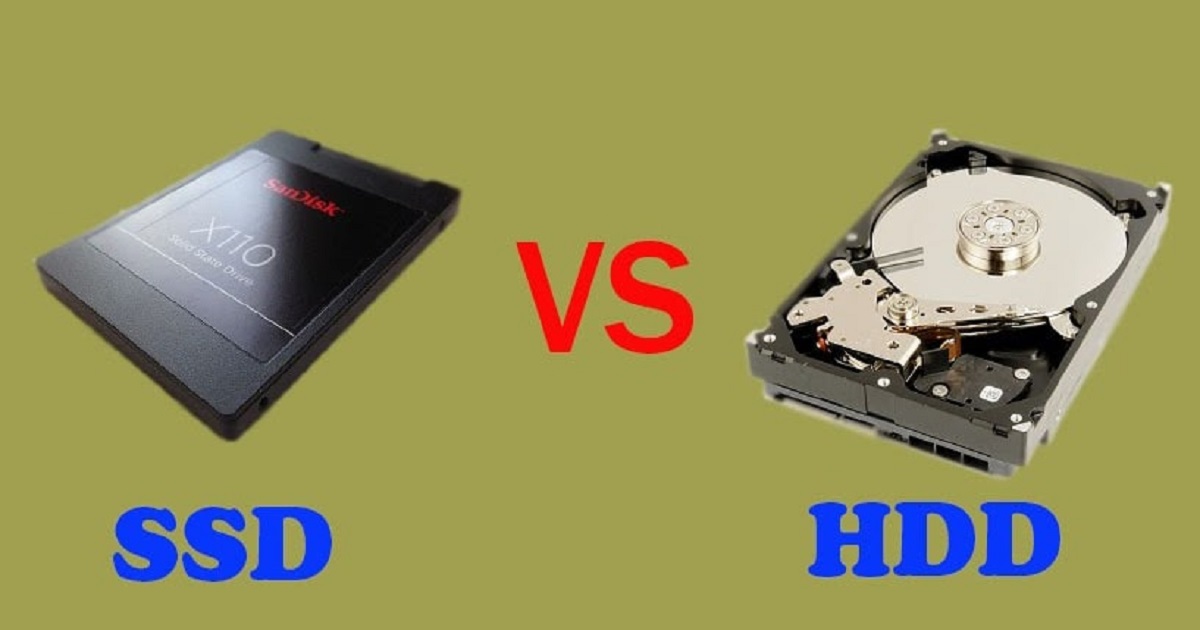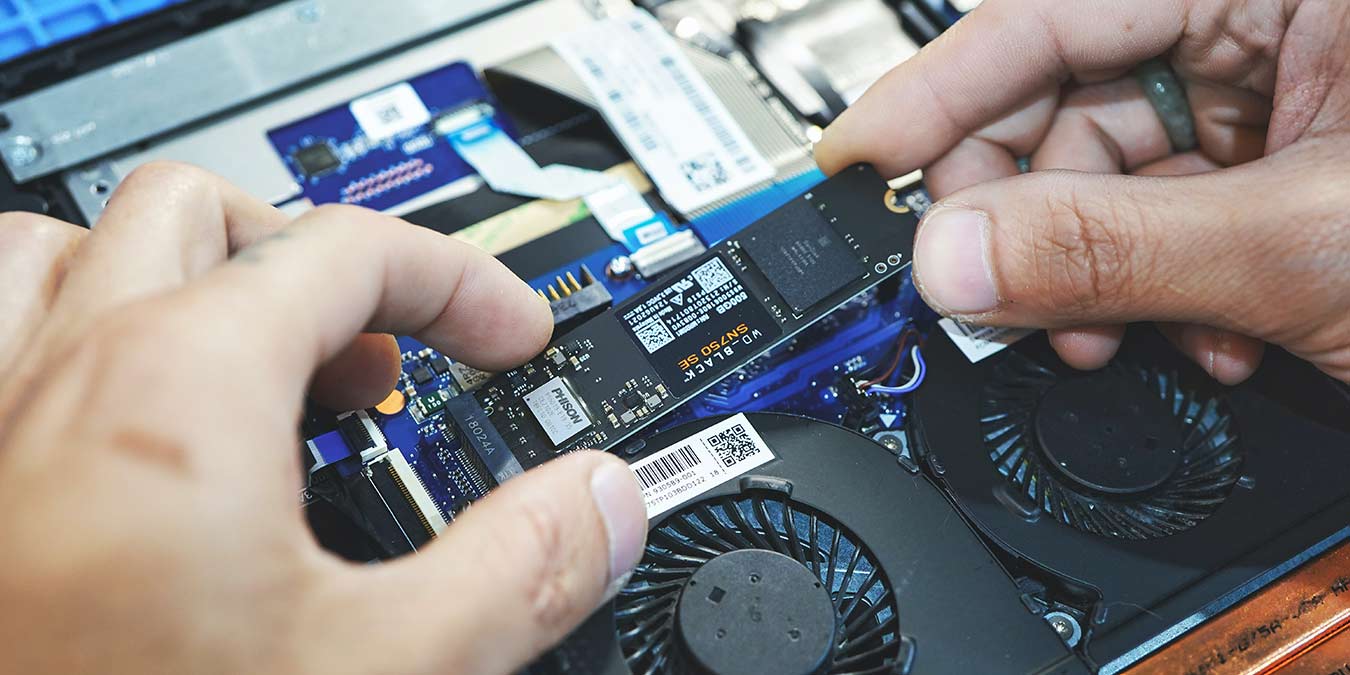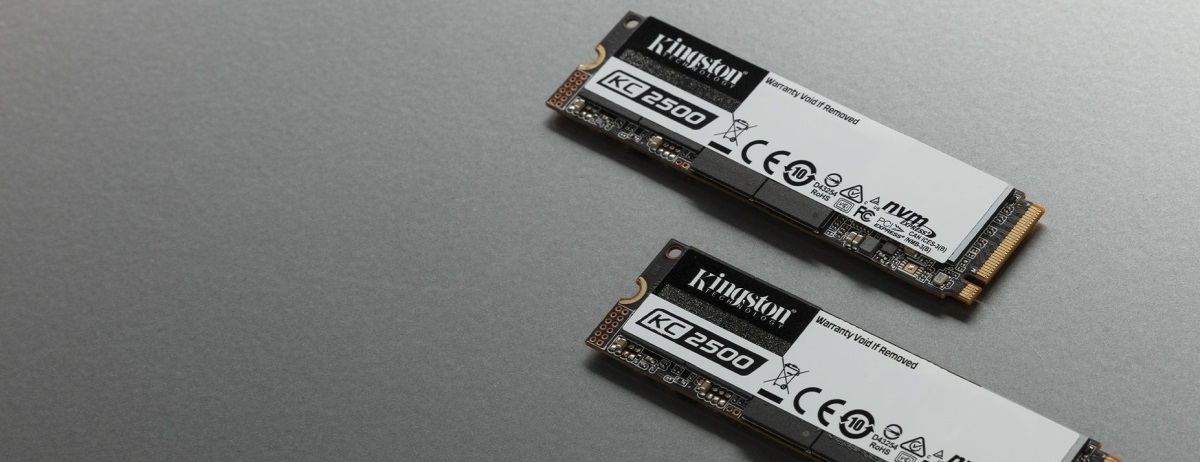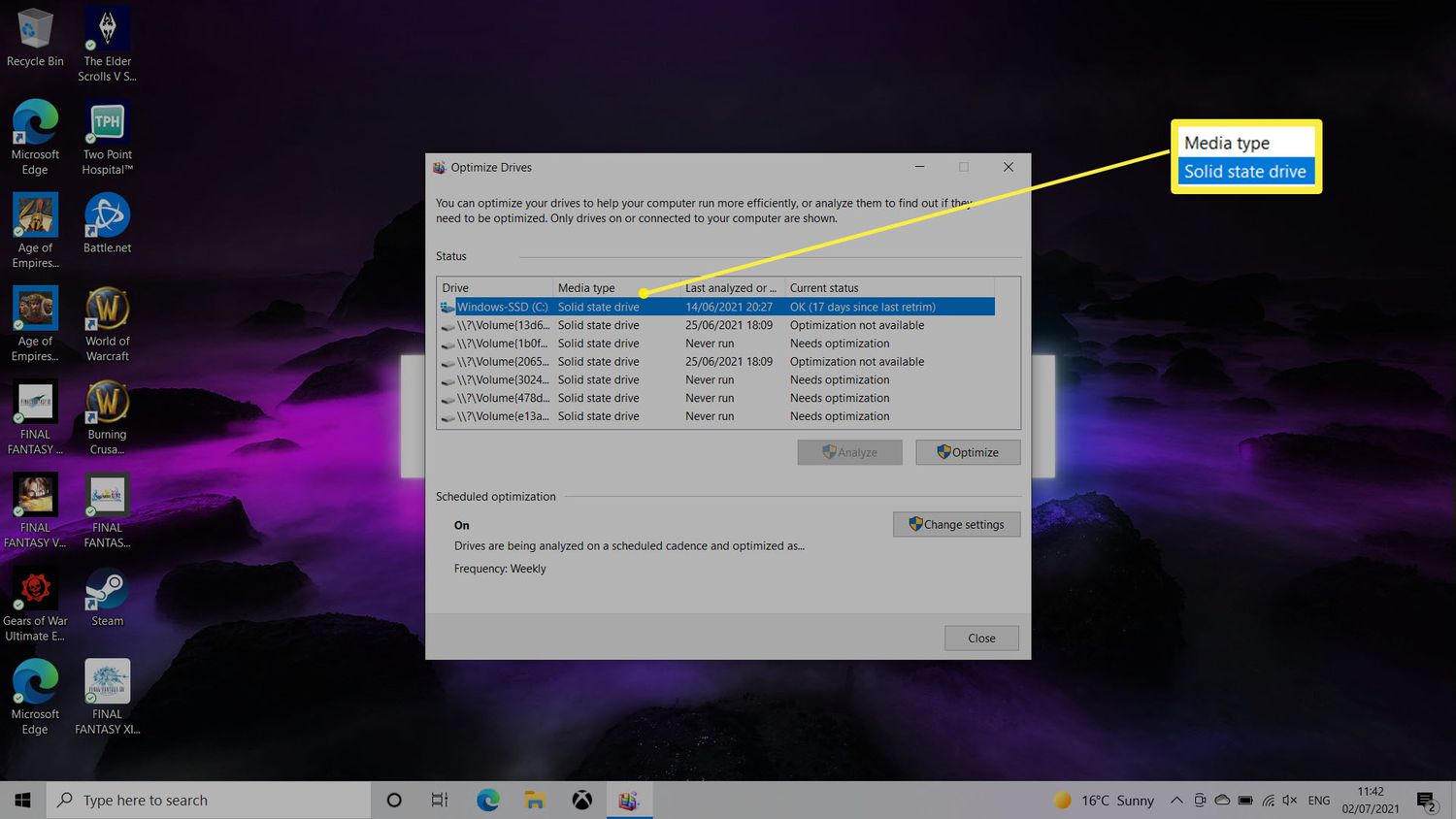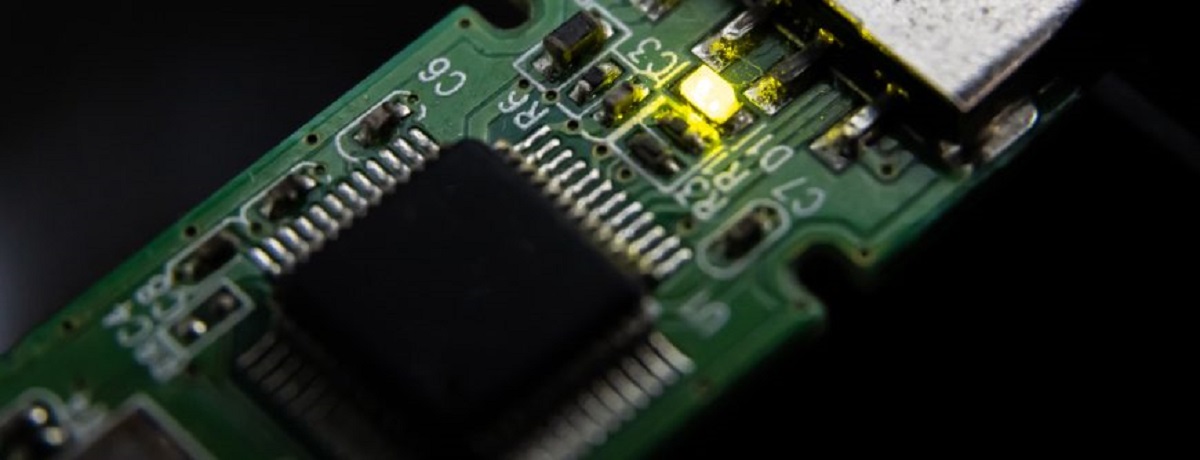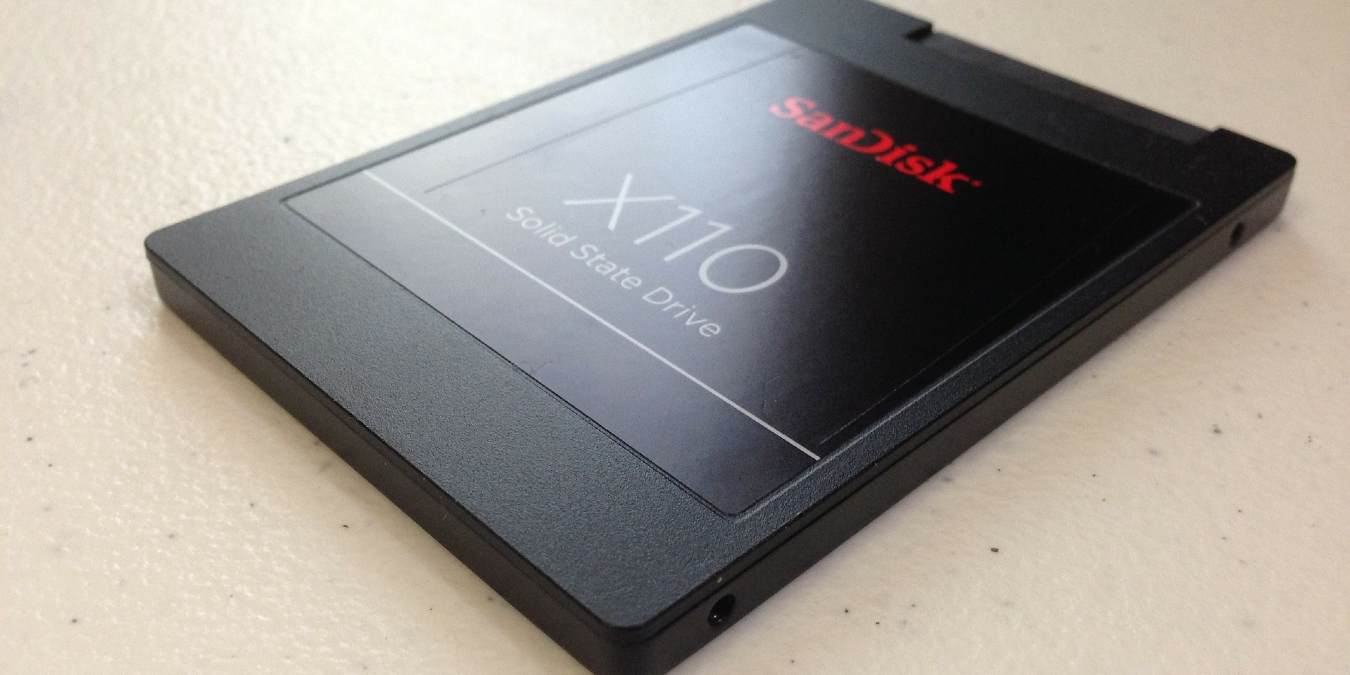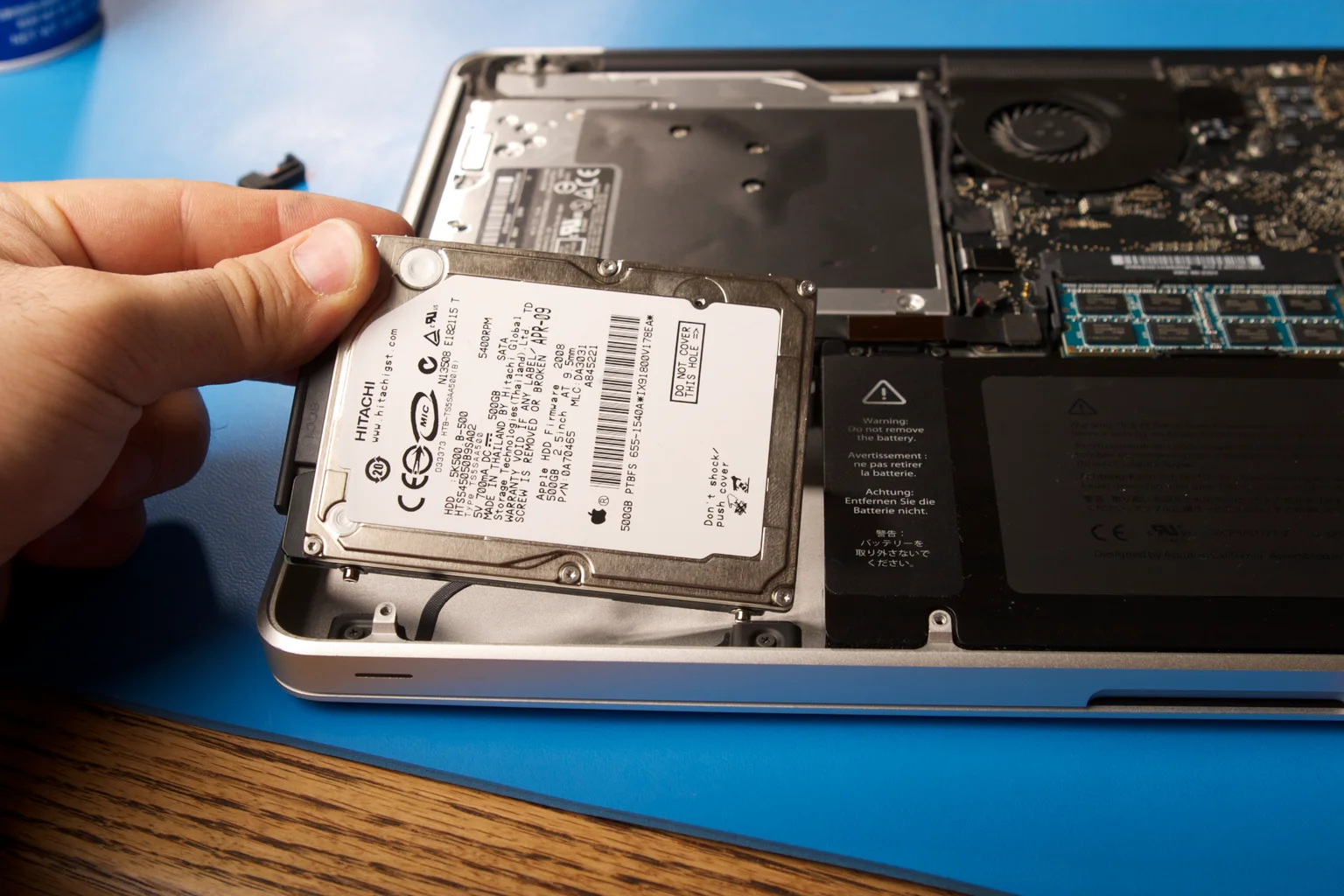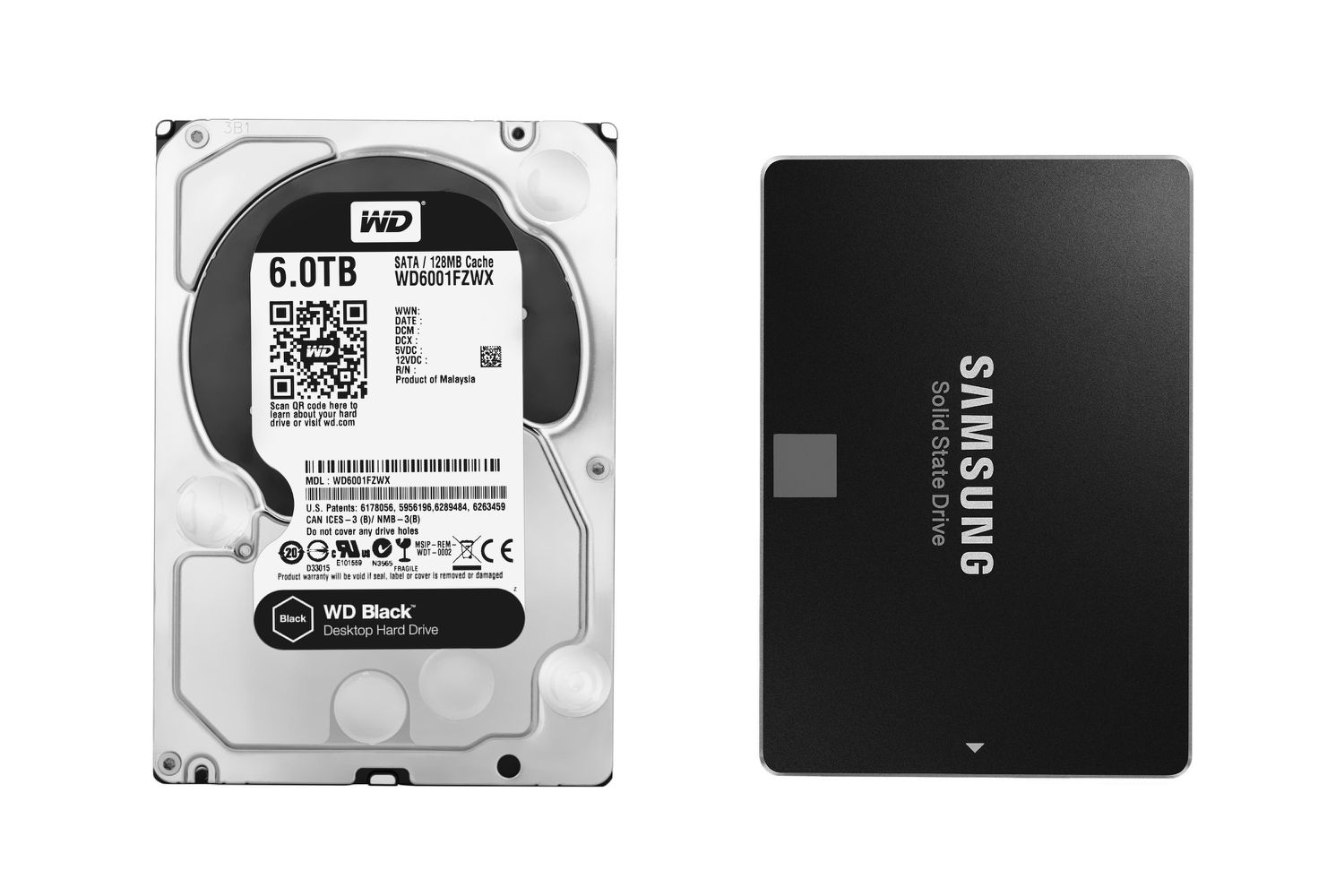Introduction
Solid State Drives (SSDs) and Hard Disk Drives (HDDs) are two commonly used storage devices in computers and other electronic devices. They serve the same purpose of storing and retrieving data, but they differ in terms of technology, performance, and characteristics. Understanding the differences between SSDs and HDDs is crucial when it comes to making informed decisions about which storage solution to choose.
SSDs have gained popularity in recent years due to their significant advantages over HDDs in terms of speed, durability, and energy efficiency. Unlike HDDs, which rely on mechanical components and spinning disks to store and access data, SSDs utilize flash memory technology, which allows for faster data access and transfer rates.
In contrast, HDDs use magnetic platters and read/write heads to store and retrieve data. While HDDs have been the traditional choice for storage due to their larger storage capacities and lower cost per gigabyte, SSDs have quickly become the preferred option for those seeking better performance and reliability.
In this article, we will explore the characteristics that differentiate SSDs from HDDs. By understanding these differences, you will be better equipped to choose the ideal storage solution for your needs, whether it is for a personal computer, gaming console, or enterprise server.
Size and Form Factor
The size and form factor of a storage device determine its physical dimensions and compatibility with different devices. SSDs and HDDs come in various sizes and form factors to accommodate different devices and installation requirements.
SSDs are typically smaller and more compact than HDDs. They are designed to fit into the standard 2.5-inch form factor, which is commonly used in laptops and desktops. This allows for easy installation and upgrades without requiring any additional adapters or brackets. Additionally, SSDs are also available in smaller form factors like M.2 and PCIe, which are commonly used in ultra-thin laptops and high-performance desktops.
HDDs, on the other hand, are larger and bulkier compared to SSDs. The most common form factor for HDDs is the 3.5-inch size, which is primarily used in desktop computers and servers. However, there are also smaller HDDs available in the 2.5-inch form factor, which are commonly used in laptops and gaming consoles.
When it comes to compatibility, SSDs have an advantage over HDDs. SSDs can be easily installed in devices that support SATA or PCIe interfaces, which are widely available in modern computers. In contrast, HDDs may require additional power cables or mounting brackets, especially when installing them in smaller form factors or non-traditional devices.
In summary, SSDs are generally smaller and more versatile in terms of form factor compatibility. Their smaller size allows for easy installation in various devices, while HDDs tend to be larger and may require additional accessories for installation in certain devices. When choosing between SSDs and HDDs, consider the size and form factor requirements of your device to ensure compatibility and ease of installation.
Storage Technology
The storage technology used in SSDs and HDDs is one of the key factors that differentiate the two storage devices. SSDs utilize flash memory technology, while HDDs rely on magnetic platters and read/write heads.
SSDs store data in non-volatile NAND flash memory chips, which are designed to retain data even when power is disconnected. This technology allows for faster read and write speeds, as SSDs do not require any mechanical components to access data. In addition, SSDs have no moving parts, making them more resistant to physical shock and vibration compared to HDDs.
HDDs, on the other hand, store data on magnetic platters coated with a thin layer of magnetic material. The read/write heads access data by moving across the rotating platters, allowing for the retrieval or storage of data. This mechanical process inherently introduces slower access speeds compared to the electronic nature of SSDs. Additionally, the presence of moving parts in HDDs makes them more susceptible to physical damage and wear over time.
While both SSDs and HDDs can store data reliably, SSDs have a significant advantage in terms of data transfer rates. SSDs can achieve much higher read and write speeds, allowing for faster boot times, file transfers, and application launches. This makes SSDs particularly beneficial for those who require quick and efficient data access, such as gamers, graphic designers, and professionals working with large datasets.
It is important to note that the storage technology used in SSDs also plays a crucial role in their lifespan. SSDs have a limited number of write cycles, which means their performance and durability can degrade over time as data is written and erased. However, advancements in technology and the implementation of wear-leveling algorithms have significantly improved the overall lifespan and reliability of SSDs.
In summary, the storage technology used in SSDs and HDDs is a fundamental factor that differentiates the two storage devices. SSDs utilize flash memory technology, providing faster access speeds, resistance to physical shock, and improved durability. HDDs, on the other hand, rely on mechanical components, resulting in slower access speeds and increased vulnerability to physical damage.
Access Speed
Access speed refers to the time it takes for a storage device to retrieve or write data. When comparing SSDs and HDDs, access speed is one of the most significant factors that set them apart.
SSDs are renowned for their exceptional access speed, thanks to their flash memory technology. Unlike HDDs, which rely on mechanical parts and spinning disks, SSDs have no moving components, allowing for near-instantaneous data access. The absence of physical movement results in significantly reduced latency, meaning that data can be retrieved or written much faster.
On average, SSDs can achieve random read speeds of hundreds of megabytes per second and random write speeds of tens to hundreds of megabytes per second. This translates to faster boot times, quicker application launches, and snappier overall system performance. Additionally, SSDs also excel in handling multiple simultaneous tasks, making them ideal for multitasking and resource-intensive activities such as video editing and gaming.
HDDs, on the other hand, have significantly slower access speeds compared to SSDs. The spinning disks and mechanical read/write heads of HDDs result in higher latency and longer seek times. This translates to slower read and write speeds, especially for random access operations. HDDs typically have random read speeds of tens to hundreds of megabytes per second and random write speeds of a few tens of megabytes per second.
While HDDs may still be sufficient for everyday tasks like web browsing, email, and document editing, their slower access speeds can become noticeable when dealing with larger files, running applications that require fast data access, or actively multitasking.
It’s important to note that not all SSDs are created equal when it comes to access speed. Factors like the drive’s controller, interface (SATA, PCIe), and the specific NAND flash memory used can influence its performance. Therefore, it is crucial to consider the specifications and technology of the SSD when comparing access speeds.
In summary, SSDs offer significantly faster access speeds compared to HDDs. Their lack of moving parts allows for near-instantaneous data access, resulting in quicker boot times, application launches, and overall system performance. HDDs, on the other hand, have slower access speeds due to their mechanical nature, making them less suitable for tasks that require fast data retrieval or simultaneous multitasking.
Data Transfer Rate
Data transfer rate refers to the speed at which data can be read from or written to the storage device. It is an important factor to consider when comparing SSDs and HDDs, as it directly affects the efficiency and performance of data-intensive tasks.
SSDs outperform HDDs when it comes to data transfer rate. Due to their flash memory technology and lack of moving parts, SSDs can achieve significantly higher data transfer rates. This means that large files can be transferred or copied at much faster speeds, resulting in improved productivity and reduced waiting times.
SSDs typically offer sequential read and write speeds that range from hundreds of megabytes per second to multiple gigabytes per second. These high data transfer rates make them ideal for tasks that involve handling large files, such as video editing, rendering, and data backup. SSDs also exhibit consistent performance across different file sizes, allowing for efficient data transfer regardless of the file’s size or format.
In contrast, HDDs have lower data transfer rates compared to SSDs. The mechanical nature of HDDs, with spinning platters and read/write heads, leads to limitations in their ability to read and write data quickly. HDDs typically offer sequential read and write speeds that range from tens to hundreds of megabytes per second.
When it comes to random data transfer, SSDs also have an advantage over HDDs. SSDs can handle multiple simultaneous read and write operations with ease, resulting in faster access to different parts of the stored data. In comparison, HDDs may struggle with random access, leading to longer seek times and decreased performance.
It’s important to note that the actual data transfer rate experienced by a storage device also depends on various other factors, such as the computer’s hardware configuration, the interface used (e.g., SATA, PCIe), and the specific workload. However, in general, SSDs consistently deliver faster data transfer rates compared to HDDs.
In summary, SSDs offer superior data transfer rates compared to HDDs. Their flash memory technology and lack of moving parts enable them to achieve much higher speeds for both sequential and random data transfer. This makes SSDs ideal for tasks that involve working with large files and require fast and efficient data transfer.
Noise and Vibration
Noise and vibration are two factors that can impact the user experience and overall comfort when using a storage device. When comparing SSDs and HDDs, there are notable differences in terms of noise and vibration levels.
SSDs, with their solid-state design and lack of moving parts, operate silently. The absence of spinning disks and read/write heads eliminates the mechanical noise typically associated with HDDs. This makes SSDs an excellent choice for those who value a quiet and peaceful computing environment, whether it’s for a home office, recording studio, or any other noise-sensitive setting.
Furthermore, SSDs contribute to a more stable and vibration-free environment. Since SSDs do not rely on spinning disks, they are not susceptible to vibrations caused by disk rotation or movement. This results in less vibration within the system, reducing the risk of component failures and providing a smoother overall operation.
HDDs, on the other hand, are inherently noisier due to their mechanical nature. The spinning disks and the movement of read/write heads create audible noise and vibrations. Although modern HDDs are designed to minimize noise and vibration, they are still significantly louder compared to SSDs. This can be particularly noticeable during disk operations, such as booting up the system, accessing large files, or running resource-intensive applications.
The noise and vibration levels of HDDs can be bothersome, especially in quiet environments or when using the computer for prolonged periods. However, it is worth noting that noise and vibration levels can vary across different HDD models, with some being quieter than others.
In summary, SSDs offer a noise-free and vibration-free storage experience due to their solid-state design and lack of moving parts. HDDs, on the other hand, generate audible noise and vibrations due to their mechanical nature. When choosing between SSDs and HDDs, consider the impact of noise and vibration in your specific environment or use case.
Power Consumption
The power consumption of a storage device plays a crucial role in determining the overall energy efficiency of a computer system. When comparing SSDs and HDDs, there are notable differences in terms of power consumption.
SSDs are known for their energy efficiency, consuming significantly less power compared to HDDs. This is primarily due to the absence of mechanical components and spinning disks in SSDs. SSDs rely on flash memory technology, which utilizes semiconductors to store and access data. As a result, they consume less power in both active and idle states.
When actively accessing or transferring data, SSDs generally consume less power than HDDs. This is because SSDs have faster access speeds and can complete their operations quicker, requiring less power to complete the task. Additionally, SSDs have a shorter startup time, resulting in lower power consumption during system boot-up.
In idle or standby mode, SSDs consume minimal power. This is advantageous for laptops and other battery-operated devices, as lower power consumption contributes to extending battery life. Furthermore, SSDs do not produce heat like HDDs, resulting in reduced cooling requirements and additional energy savings.
HDDs, on the other hand, consume more power compared to SSDs. The mechanical nature of HDDs requires energy to spin the disks and move the read/write heads. As a result, HDDs generally consume more power during both active and idle states.
HDDs also require more power during startup, as the spinning disks and read/write heads need time to reach operational speed. This results in higher power consumption during system boot-up compared to SSDs. Additionally, the mechanical nature of HDDs produces heat, which requires additional cooling mechanisms, further increasing power consumption.
It’s important to note that power consumption can vary among different models and capacities of SSDs and HDDs. Newer generations of both SSDs and HDDs may offer increased power efficiency, so it’s always beneficial to consider the specific specifications and power requirements of the storage device you plan to use.
In summary, SSDs are more power-efficient compared to HDDs due to their solid-state design and lack of mechanical components. SSDs consume less power during active operations, in idle or standby mode, and during system boot-up. HDDs, with their spinning disks and read/write heads, consume more power in all these scenarios.
Reliability and Durability
Reliability and durability are crucial factors to consider when evaluating storage devices. When comparing SSDs and HDDs, there are notable differences in terms of their reliability and durability.
SSDs are generally considered to be more reliable and durable compared to HDDs. This is primarily due to their solid-state design, which eliminates the mechanical components and spinning disks found in HDDs.
HDDs are more susceptible to mechanical failure as their moving parts can wear out over time. The spinning disks and read/write heads are vulnerable to damage from physical shock and vibration, making HDDs more prone to failures and data loss. Factors such as drops, bumps, or sudden movement can lead to permanent damage to the delicate mechanical components of an HDD.
SSDs, on the other hand, are not susceptible to mechanical failures because they do not rely on moving parts. The absence of spinning disks and read/write heads means that SSDs are less likely to experience mechanical wear and tear, making them more reliable in the long run.
Furthermore, SSDs have better resistance to physical shock and vibration. The lack of mechanical components makes SSDs more resilient and less prone to damage from external forces. This is particularly advantageous for portable devices such as laptops or external drives, where there is a higher risk of accidental drops or impacts.
However, it’s important to note that while SSDs are generally more reliable and durable, they are not immune to failures. SSDs have a limited number of write cycles, known as program/erase cycles, before their performance can start to degrade. This is known as “wear leveling,” where the SSD controller distributes write operations evenly across the memory cells to maximize their lifespan.
Modern SSDs have significantly improved in terms of durability, with many of them offering high endurance ratings and advanced error correction mechanisms. Manufacturers also provide warranty periods and specifications, such as terabytes written (TBW), to indicate the lifespan and expected durability of their SSDs.
In summary, SSDs are generally regarded as more reliable and durable compared to HDDs. With their solid-state design and absence of moving parts, SSDs are less prone to mechanical failures and are more resistant to physical shock and vibration. However, it’s important to consider the endurance ratings and specifications provided by SSD manufacturers to ensure the longevity and durability of the chosen SSD.
Data Protection and Security
Data protection and security are critical considerations when choosing a storage device. SSDs and HDDs have different features and characteristics that impact data protection and security.
SSDs offer several advantages when it comes to data protection. One key feature is the use of wear-leveling algorithms, which evenly distribute write operations across the memory cells. This ensures that no single area of the SSD is excessively worn out, thereby extending the lifespan of the drive.
Additionally, SSDs implement error correction mechanisms that detect and correct data errors at the hardware level. This enhances data integrity and protects against potential issues that can arise during data storage and retrieval.
Some SSDs also come equipped with features like power-loss protection, which ensures data is not lost or corrupted in the event of sudden power outages or system failures. This feature is particularly beneficial for ensuring the safe storage and retrieval of critical data.
Furthermore, SSDs have the advantage of being more resistant to physical damage, as they do not rely on moving parts like HDDs. This contributes to better data protection, as physical shock or vibrations are less likely to result in data corruption or loss.
In terms of data security, SSDs often offer built-in hardware encryption options. This allows users to encrypt their data at the hardware level, ensuring that sensitive information remains secure even if the drive is accessed by unauthorized individuals. Additionally, SSDs generally offer faster encryption/decryption speeds compared to HDDs, allowing for more efficient data protection.
HDDs also provide data protection features, such as error correction mechanisms and built-in encryption options. However, their reliance on mechanical components makes them more susceptible to physical damage, which can lead to data loss or corruption if not properly handled.
In summary, SSDs offer robust data protection features and enhanced data security compared to HDDs. They employ wear-leveling algorithms, error correction mechanisms, and often provide built-in encryption options. Additionally, their resistance to physical damage contributes to better data protection. While HDDs also offer data protection features, their mechanical nature makes them more vulnerable to physical damage and potential data loss or corruption.
Cost
The cost of a storage device is an important factor to consider when making a decision between SSDs and HDDs. There are notable differences in cost between these two types of storage devices.
HDDs have long been the more economical choice when it comes to storage. They generally offer larger storage capacities at a lower cost per gigabyte compared to SSDs. This makes HDDs a suitable option for those who require a large amount of storage space at an affordable price, such as individuals with extensive media libraries or businesses that deal with large amounts of data.
However, it is worth noting that the cost of HDDs can vary depending on factors such as the brand, capacity, and any additional features or technologies included. Higher-performance HDDs or those designed for special purposes can be more expensive than standard consumer-grade models.
SSDs, on the other hand, have historically been more expensive compared to HDDs, especially when it comes to price per gigabyte of storage. However, the cost of SSDs has been steadily decreasing over the years as the technology advances and becomes more widespread. As a result, SSDs have become more affordable for consumers and businesses.
While SSDs still tend to be more expensive than HDDs, they offer compelling benefits that can justify the higher cost. SSDs provide faster access speeds, improved performance, and increased energy efficiency compared to HDDs. These advantages make SSDs well-suited for users who prioritize speed, reliability, and responsiveness. SSDs are particularly beneficial for gamers, professionals working with large files or data-intensive applications, and those seeking enhanced system performance.
It is also important to consider the long-term costs associated with storage devices. SSDs generally have lower power consumption, resulting in energy savings over time. Moreover, SSDs require less maintenance and have a longer lifespan due to their lack of mechanical components, reducing the need for repairs or replacement. These factors can help offset the higher initial cost of SSDs.
In summary, HDDs are generally more cost-effective in terms of storage capacity and cost per gigabyte. However, the decreasing cost of SSDs, coupled with their performance and efficiency benefits, make them an appealing choice for users who prioritize speed and reliability, even though they may come at a higher price. Consider the specific storage needs, budget, and expected performance requirements when making a decision between SSDs and HDDs.
Conclusion
When choosing between a Solid State Drive (SSD) and a Hard Disk Drive (HDD), it is important to consider a range of factors that differentiate these storage devices. Both SSDs and HDDs have their own unique characteristics and strengths, which make them suitable for different use cases and budget considerations.
SSDs offer numerous advantages over HDDs, including faster access speeds, improved performance, and energy efficiency. Their solid-state design, lack of moving parts, and flash memory technology result in faster boot times, quicker application launches, and efficient multitasking. SSDs are particularly desirable for individuals or businesses that deal with large files, complex computing tasks, or require quick and reliable data access.
HDDs, on the other hand, provide larger storage capacities at a lower cost per gigabyte. They are a more economical choice for those who require ample storage space for their data without necessarily requiring the speed and efficiency of an SSD. HDDs are well-suited for tasks that involve storing media files, backups, or data archives.
Additionally, SSDs offer benefits in terms of reliability, durability, noise reduction, and data protection. Their resistance to physical shock, vibration, and wear and tear makes them less prone to failures, while their absence of moving parts ensures silent operation. SSDs also often include features such as wear-leveling algorithms, error correction mechanisms, and built-in encryption options for enhanced data protection and security.
However, it’s important to consider the cost factor when making a decision between SSDs and HDDs. HDDs generally offer a more budget-friendly option for storage, although the declining prices of SSDs have made them increasingly affordable for a wider range of users.
In conclusion, choosing between an SSD and an HDD depends on individual preferences, specific use cases, and budget considerations. If speed, performance, and energy efficiency are important, SSDs are the ideal choice. On the other hand, if a significant amount of storage space is required at a more affordable cost, HDDs are a viable option. Assessing your unique needs and weighing the advantages and disadvantages of each storage device will help you make an informed decision that aligns with your requirements and budget.







